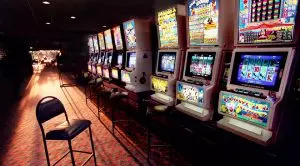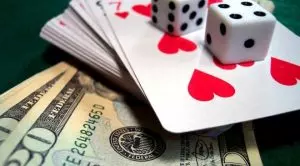 Last month, the Australian Government released some figures in order to illustrate the current gambling habits of Australian players in the best possible way.
Last month, the Australian Government released some figures in order to illustrate the current gambling habits of Australian players in the best possible way.
The study aimed at presenting a comprehensive picture of the situation, has been conducted by the Australian Gambling Research Centre (AGRC). Currently, the latter operates as part of the Australian Institute of Family Studies. According to the figures announced by the Australian Government, about 6.8 million Australians, who represent approximately 39% of the adult population in the country, gamble on a regular basis.
The report, released at the end of November 2017, provides overall data concerning the gambling activity in Australia in 2015, as far as participation, expenditure and problem gambling behaviour among regular players is concerned. The report was obtained from the Household, Income and Labour Dynamics in Australia (HILDA), with a total of 17,606 people becoming part of the survey.
Key Findings in the HILDA Survey
 The report presented by the Australian Government’s department, highlighted a number of key aspects of problem gambling in the country. The new gambling questions included in the 2015 HILDA survey has managed to provide detailed analysis and overview of regular gambling activity across the country, presenting various statistics and information about problem gambling.
The report presented by the Australian Government’s department, highlighted a number of key aspects of problem gambling in the country. The new gambling questions included in the 2015 HILDA survey has managed to provide detailed analysis and overview of regular gambling activity across the country, presenting various statistics and information about problem gambling.
Gambling Participation
 As revealed in the analysis provided by the AGRC, approximately 6.8 million local citizens gamble regularly and spend money on at least one gambling activity every month. Dr. Jennifer Baxter, who is the manager of the Research Centre that carried out the study and analysed the results revealed that lotteries were the most-preferred form of gambling among Australians, while instant scratch tickets and poker machines, known as pokies, were also among the favourite types of gambling activities of the local players.
As revealed in the analysis provided by the AGRC, approximately 6.8 million local citizens gamble regularly and spend money on at least one gambling activity every month. Dr. Jennifer Baxter, who is the manager of the Research Centre that carried out the study and analysed the results revealed that lotteries were the most-preferred form of gambling among Australians, while instant scratch tickets and poker machines, known as pokies, were also among the favourite types of gambling activities of the local players.
A total of 76% of the 6.8 million regular gamblers in Australia spent money on lotteries. As mentioned above, instant scratch tickets were the second most-preferred gambling activity, with 22% of the gamblers spending money on that form of gambling. Electronic gaming machines, also known as pokies, were preferred by 21% of the local gamblers in 2015.
According to the information revealed by Dr. Baxter, there were various social demographic differences between people who were described as regular gamblers and the rest of the adult population of Australia. She shared that regular gamblers were mainly men, aged 50 and over, who had ten or less years of schooling or who had completed a diploma or a certificate. The study also showed that more retired people who lived either alone or with one other person were more involved in gambling activities. Such people also usually live outside a major city and often live on welfare.
Gambling Expenditure
 Dr. Andrew Armstrong, the lead researcher at the Australian Gambling Research Centre shared that the regular gamblers in Australia spent a total of AU$8.6 billion in 2015 on gambling activities in which they were engaged every month, including lotteries, race betting and pokies.
Dr. Andrew Armstrong, the lead researcher at the Australian Gambling Research Centre shared that the regular gamblers in Australia spent a total of AU$8.6 billion in 2015 on gambling activities in which they were engaged every month, including lotteries, race betting and pokies.
According to the data revealed by the AGRC, an estimated amount of AU$1,272 were spent annually by an average regular gambler.
Card-playing poker gamblers spent approximately AU$3,674 on poker and other gambling activities, while players who preferred instant scratch tickets spent a little more than AU$622 on tickets and other gambling activities. The total average annual spending of pokies’ lovers amounted to AU$1,292, while those who placed regular bets on races spent around AU$1,300. As revealed by the latest industry’s statistic, casino table players spent an average of almost AU$1,370 on an annual basis.
Gambling Problems and Participation
 When it comes to problem gambling behaviour and participation in gambling activities and the co-relation between them, the survey showed that approximately 7.9% of the Australian adult citizens experienced one or more problems related to gambling in 2015. The percentage equalled to a little less than 1.4 million people.
When it comes to problem gambling behaviour and participation in gambling activities and the co-relation between them, the survey showed that approximately 7.9% of the Australian adult citizens experienced one or more problems related to gambling in 2015. The percentage equalled to a little less than 1.4 million people.
About 193,000 of these people could be described as compulsive gamblers. In addition, about 80% of the players who had faced certain problems related to gambling over the past year had taken part in one or more gambling activities monthly in 2015.
According to the data presented in the report, problem gamblers faced much higher participation rates than the Australian residents classified as non-problem gamblers. In addition, there were much higher proportions of Australian players put at low, moderate and high risk of becoming problem gamblers among the ones who preferred electronic gaming machines (EGMs), sports betting and race betting.
As far as the problem gambler’s “profile” is concerned, players who experienced the negative consequences of gambling were mostly native male, aged between 18 and 29 years, single, unemployed or living on low income or welfare payments. Most of them were also renting and living outside a major socio-economic area.
Gambling Problems and Expenditure
 Another important aspect included in the report was the relation between problem gambling and players’ expenditures. It turns out that players who were dealing with gambling addictions represented 17% of the regular gamblers and accounted for almost half of the overall expenditures of regular gamblers back in 2015.
Another important aspect included in the report was the relation between problem gambling and players’ expenditures. It turns out that players who were dealing with gambling addictions represented 17% of the regular gamblers and accounted for almost half of the overall expenditures of regular gamblers back in 2015.
In addition, they also accounted for more than half of the expenditures made by regular players on sports betting, race betting, private betting, electronic gaming machines and casino table games.
The average annual expenditure of problem gamblers in Australia in 2015 amounted to AU$6,241. In comparison, players who were not dealing with gambling addictions spent an average of AU$883.
The report presented by the Australian Institute of Family Studies (AIFS) also showed certain levels of connection between gambler risk status and expenditure, with keno, instant scratch tickets and lottery having the weakest connection. The strongest connection between problem gambling and expenditure, on the other hand, existed with sports betting, race betting and electronic gaming machines.
Conclusion
 The information which was presented in the report certainly raised some questions in local authorities and organisations. For instance, the Alliance for Gambling Reform shared that the number of Australians who lost money on pokies should be alarming to local legislators who needed to take action in order to tackle problem gambling.
The information which was presented in the report certainly raised some questions in local authorities and organisations. For instance, the Alliance for Gambling Reform shared that the number of Australians who lost money on pokies should be alarming to local legislators who needed to take action in order to tackle problem gambling.
Recently, video poker machines, also known as pokies, have been facing a lot of criticism in the country due to their high addictiveness. Apart from that, a few months ago video poker machines have become notorious after a few months ago a self-proclaimed problem gambler said that the Dolphin Treasure gaming machine manufacturers have designed it intentionally in a way that was found particularly attractive by players and was aimed to lure them spend more time on the machines.
- Author


